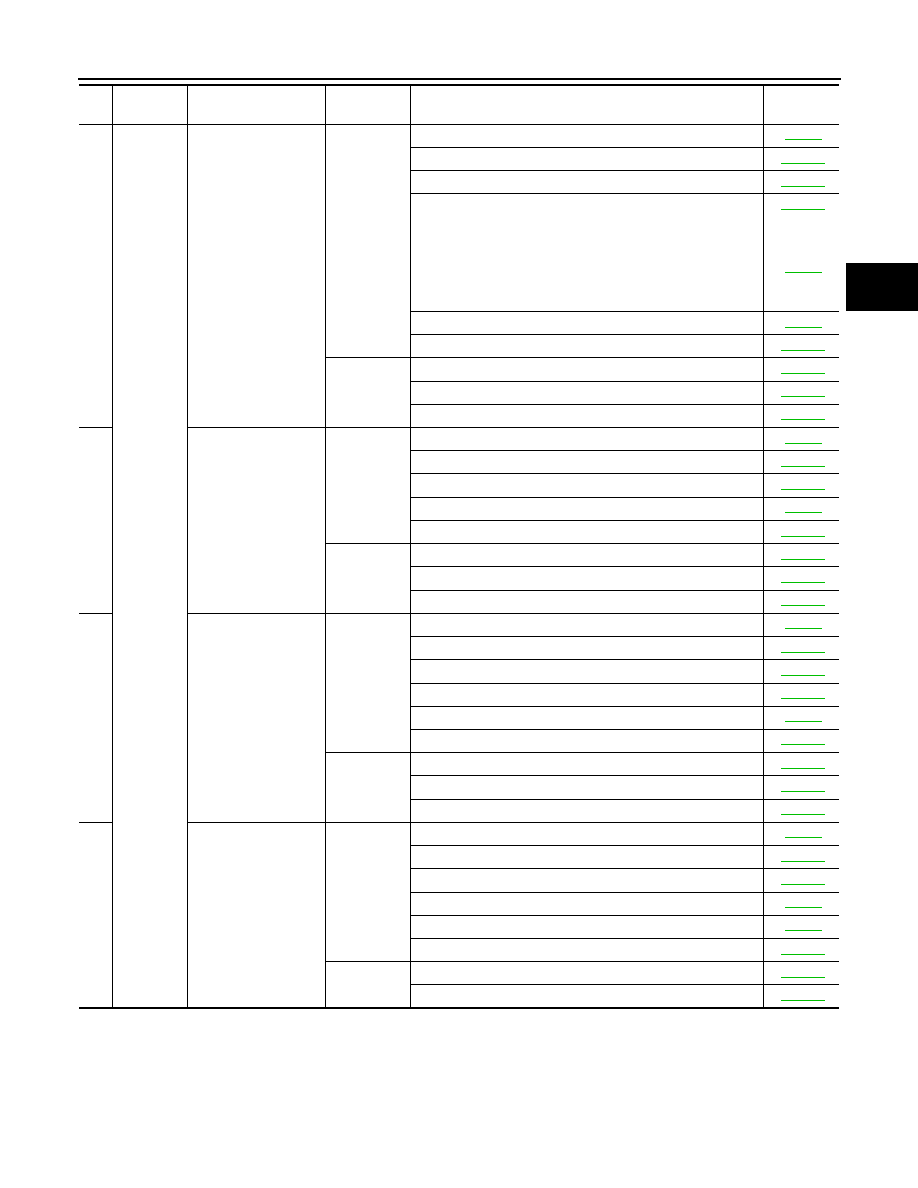Nissan Pathfinder (2012 year). Manual - part 590

SYSTEM SYMPTOM
TM-147
< SYMPTOM DIAGNOSIS >
C
E
F
G
H
I
J
K
L
M
A
B
TM
N
O
P
58
Others
Vehicle does not de-
celerate by engine
brake.
ON vehicle
1. Transmission range switch
2. Fluid level and state
3. Control cable adjustment
4. 1st position switch (without manual mode), manual mode
switch (with manual mode)
(without
manual
mode),
(with man-
ual mode)
5. CAN communication line
6. Control valve with TCM
OFF vehicle
7. Input clutch
8. High and low reverse clutch
9. Direct clutch
59
Engine brake does not
operate in “2” position.
ON vehicle
1. Transmission range switch
2. Fluid level and state
3. Control cable adjustment
7. CAN communication line
8. Control valve with TCM
OFF vehicle
9. Front brake (brake band)
10. Input clutch
11. High and low reverse clutch
60
Engine brake does not
operate in “1” position.
ON vehicle
1. Transmission range switch
2. Fluid level and state
3. Control cable adjustment
4. 1st position switch
5. CAN communication line
6. Control valve with TCM
OFF vehicle
7. Input clutch
8. High and low reverse clutch
9. Direct clutch
61
Engine brake does not
work M
5
→
M4.
ON vehicle
1. Transmission range switch
2. Fluid level and state
3. Control cable adjustment
4. Manual mode switch
5. CAN communication line
6. Control valve with TCM
OFF vehicle
7. Front brake (brake band)
8. Input clutch
No.
Items
Symptom
Condition
Diagnostic Item
Reference
page
August 2012
2012 Pathfinder